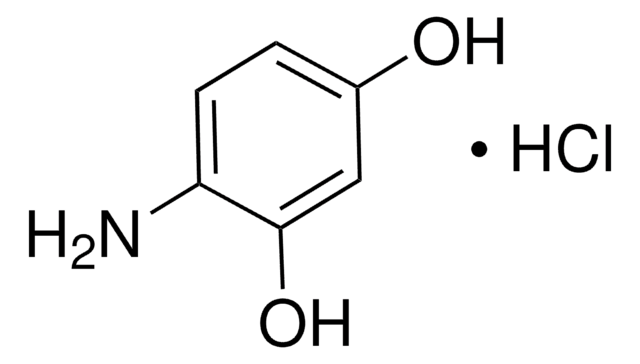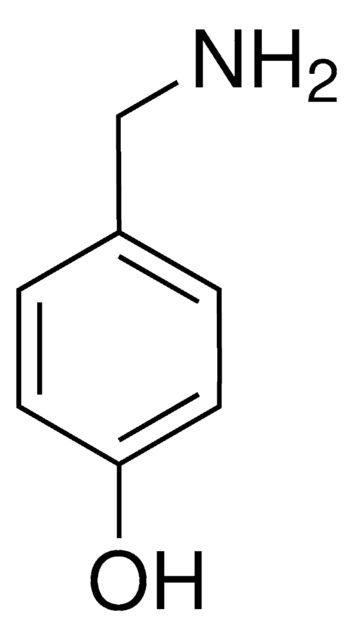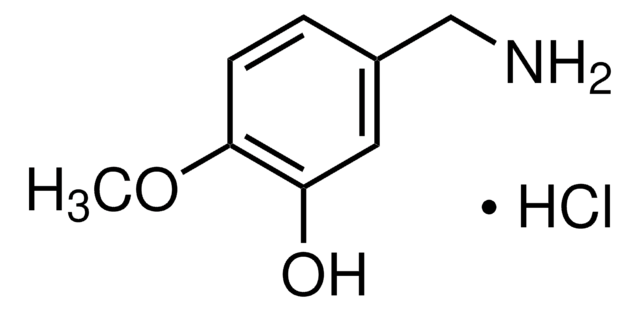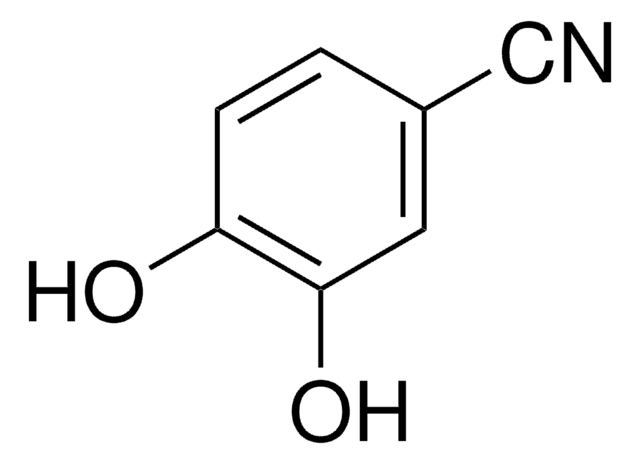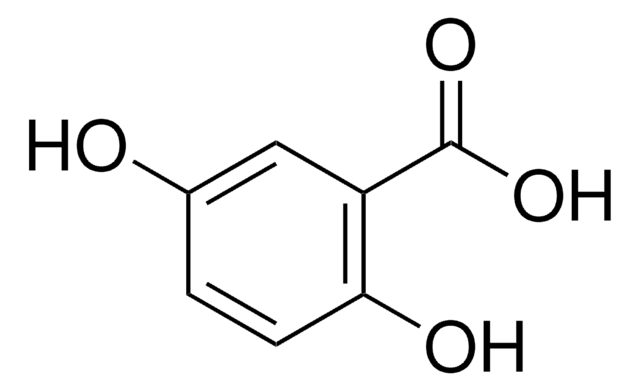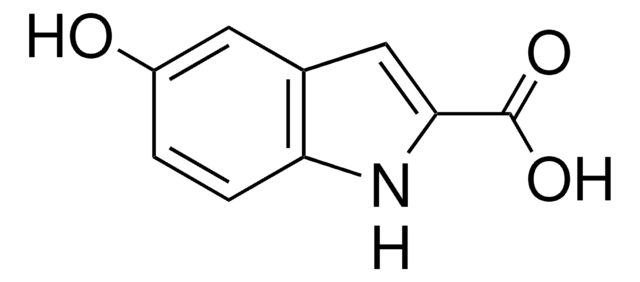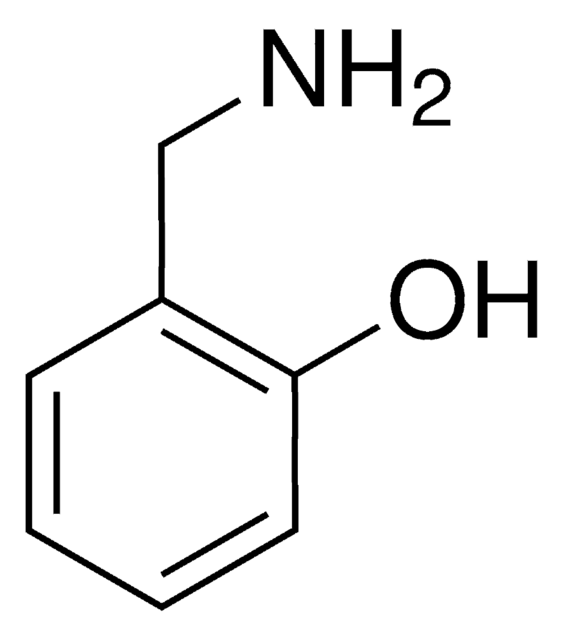Kluczowe dokumenty
858781
3,4-Dihydroxybenzylamine hydrobromide
98%
Synonim(y):
4-(Aminomethyl)catechol hydrobromide, DHBA hydrobromide
About This Item
Polecane produkty
Poziom jakości
Próba
98%
Formularz
crystals
mp
184-186 °C (lit.)
grupa funkcyjna
amine
ciąg SMILES
Br.NCc1ccc(O)c(O)c1
InChI
1S/C7H9NO2.BrH/c8-4-5-1-2-6(9)7(10)3-5;/h1-3,9-10H,4,8H2;1H
Klucz InChI
BVFZTXFCZAXSHN-UHFFFAOYSA-N
Szukasz podobnych produktów? Odwiedź Przewodnik dotyczący porównywania produktów
Zastosowanie
<li><strong>Oksydacyjna polimeryzacja 3,4-dihydroksybenzyloaminy:</strong> 3,4-dihydroksybenzyloamina jest stosowana w syntezie poli[3,4-dihydroksybenzyloaminy] (PDHBA) poprzez polimeryzację oksydacyjną, badając jej zastosowanie jako niższego homologu dopaminy do potencjalnego wykorzystania w ścieżkach syntetycznych i materiałoznawstwie (Petran et al., 2023).</li>
<li><strong>Wykrywanie wolnych metanefryn w moczu:</strong> Wykorzystując bromowodorek 3,4-dihydroksybenzyloaminy jako wzorzec wewnętrzny, badania te zwiększają dokładność wykrywania wolnych metanefryn w moczu do diagnozowania guzów chromochłonnych i przyzwojaków, pokazując ich znaczenie w klinicznych zastosowaniach diagnostycznych (Wang et al., 2020).</li>
<li><strong>Rozwój metody HPLC-ECD:</strong> W badaniu opracowano metodę HPLC-ECD z wykorzystaniem 3,4-dihydroksybenzyloaminy jako wzorca wewnętrznego do analizy witaminy C w osoczu, wykazując użyteczność substancji chemicznej w ulepszaniu metodologii analitycznych w badaniach biochemicznych (Clark i Frank, 2016).</li>
<li><strong>Analiza fluorescencyjna katecholamin:</strong> 3,4-dihydroksybenzyloamina jest stosowana jako wzorzec wewnętrzny do oznaczania katecholamin i związków pokrewnych w tkance mózgowej szczura, podkreślając jej zastosowanie w analizie i badaniach neurochemicznych (Fonseca et al., 2017).</li>
</ul>
Hasło ostrzegawcze
Warning
Zwroty wskazujące rodzaj zagrożenia
Zwroty wskazujące środki ostrożności
Klasyfikacja zagrożeń
Eye Irrit. 2 - Skin Irrit. 2 - STOT SE 3
Organy docelowe
Respiratory system
Kod klasy składowania
11 - Combustible Solids
Klasa zagrożenia wodnego (WGK)
WGK 3
Temperatura zapłonu (°F)
Not applicable
Temperatura zapłonu (°C)
Not applicable
Środki ochrony indywidualnej
dust mask type N95 (US), Eyeshields, Gloves
Wybierz jedną z najnowszych wersji:
Masz już ten produkt?
Dokumenty związane z niedawno zakupionymi produktami zostały zamieszczone w Bibliotece dokumentów.
Klienci oglądali również te produkty
Nasz zespół naukowców ma doświadczenie we wszystkich obszarach badań, w tym w naukach przyrodniczych, materiałoznawstwie, syntezie chemicznej, chromatografii, analityce i wielu innych dziedzinach.
Skontaktuj się z zespołem ds. pomocy technicznej
